Abstract
A five-year follow-up of ventilatory capacity in over 95% of a random sample of men living in the Rhondda Fach has been carried out. Miners and ex-miners with and without simple pneumoconiosis have been compared with non-mining controls, and the effect of ageing, mining, dust exposure, and tobacco smoking has been assessed. The change in Indirect Maximum Breathing Capacity (I.M.B.C.) between the two surveys appeared to be independent of age, suggesting that a linear decline in this function with age is a tenable hypothesis. An average decline of 1·865 ± 0·274 litres per minute each year in the I.M.B.C. was observed, and this fall was not significantly increased either by mining or by exposure to coal dust as measured by the number of years spent working underground.
In the non-miners a greater decline in I.M.B.C. was observed in smokers than in non-smokers, and this decline was greater in the heavy than in the light smokers. The decline in the non-smokers was 0·489 ± 0·714 litres per minute compared with 1·524 ± 0·319 litres per minute in the light and 3·338 ± 0·420 litres per minute in the heavy smokers. In the miners and ex-miners without pneumoconiosis a greater decline in I.M.B.C. was observed in smokers than in non-smokers, but there was no relation between the rate of decline and the amount smoked. The decline in the non-smokers was 0·950 ± 1·071 compared with 2·164 ± 0·485 and 2·080 ± 0·428 litres per minute in the two smoking groups. In the men with simple pneumoconiosis (category 3) there appeared to be no relation between decline in lung function and smoking habits. The decline in non-smokers was 1·492 ± 0·594 compared with 1·956 ± 0·357 and 1·438 ± 0·467 in the two smoking groups. The decline in I.M.B.C. over five years in non-miners smoking 15 g. tobacco per day and over was significantly greater than the fall estimated from the age specific trend. A possible explanation is that there has been a recent change in the effect of heavy smoking on ventilatory function resulting in a more rapid decline.
A greater decline in I.M.B.C. was observed in men with respiratory symptoms than in those without.
Full text
PDF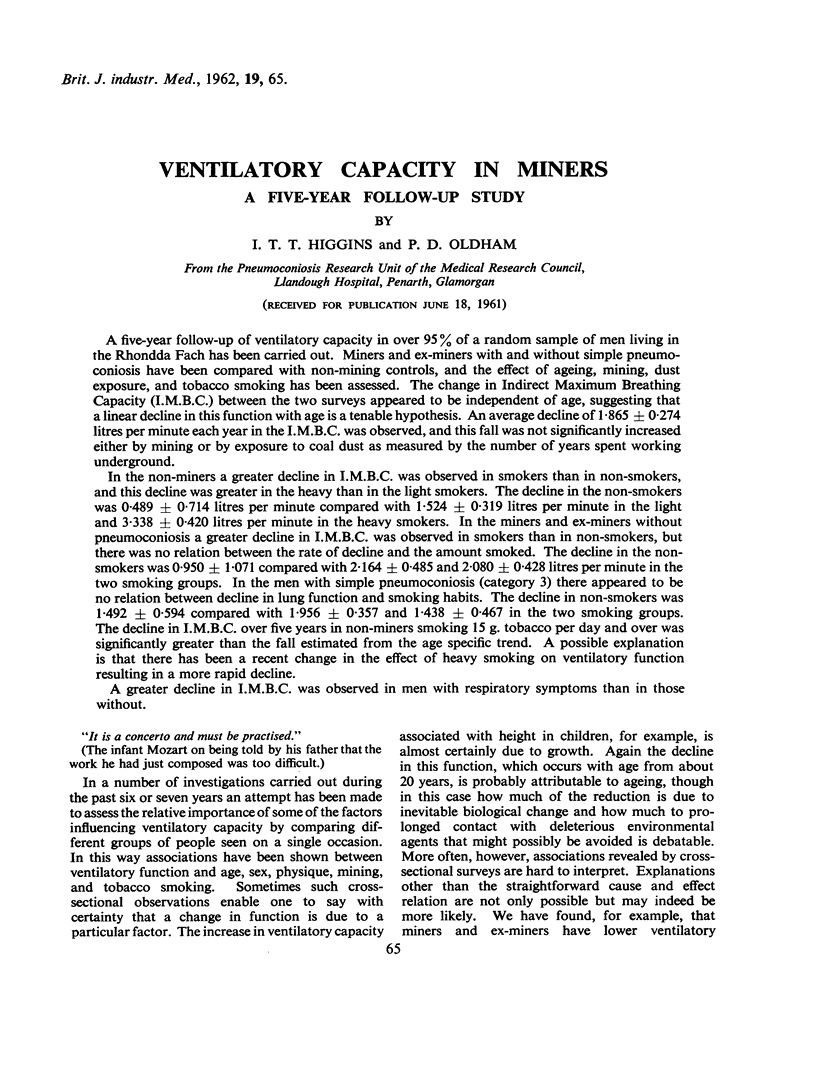
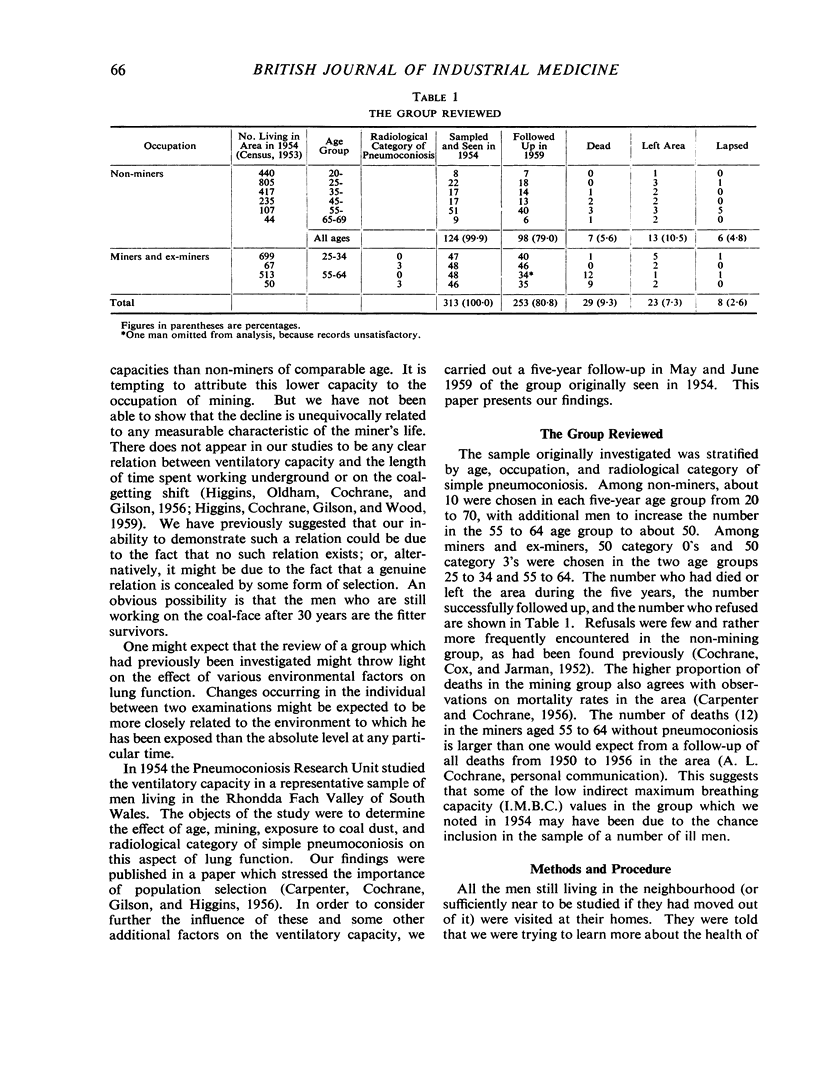
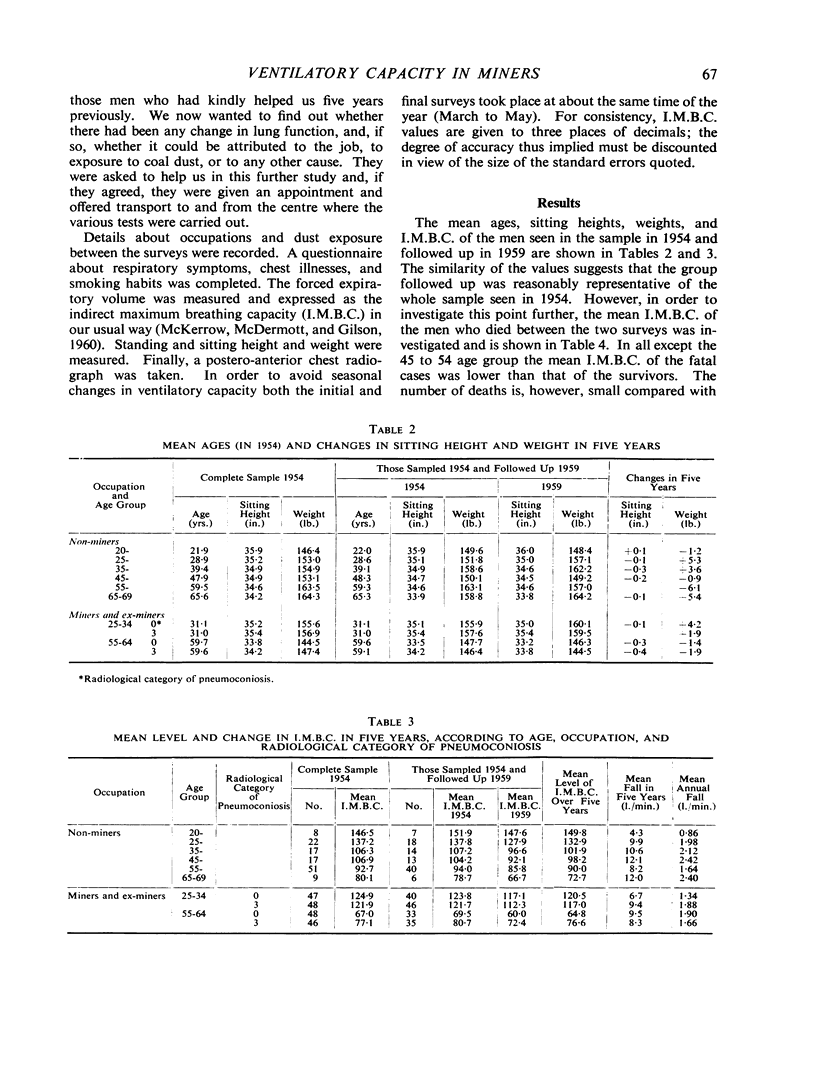
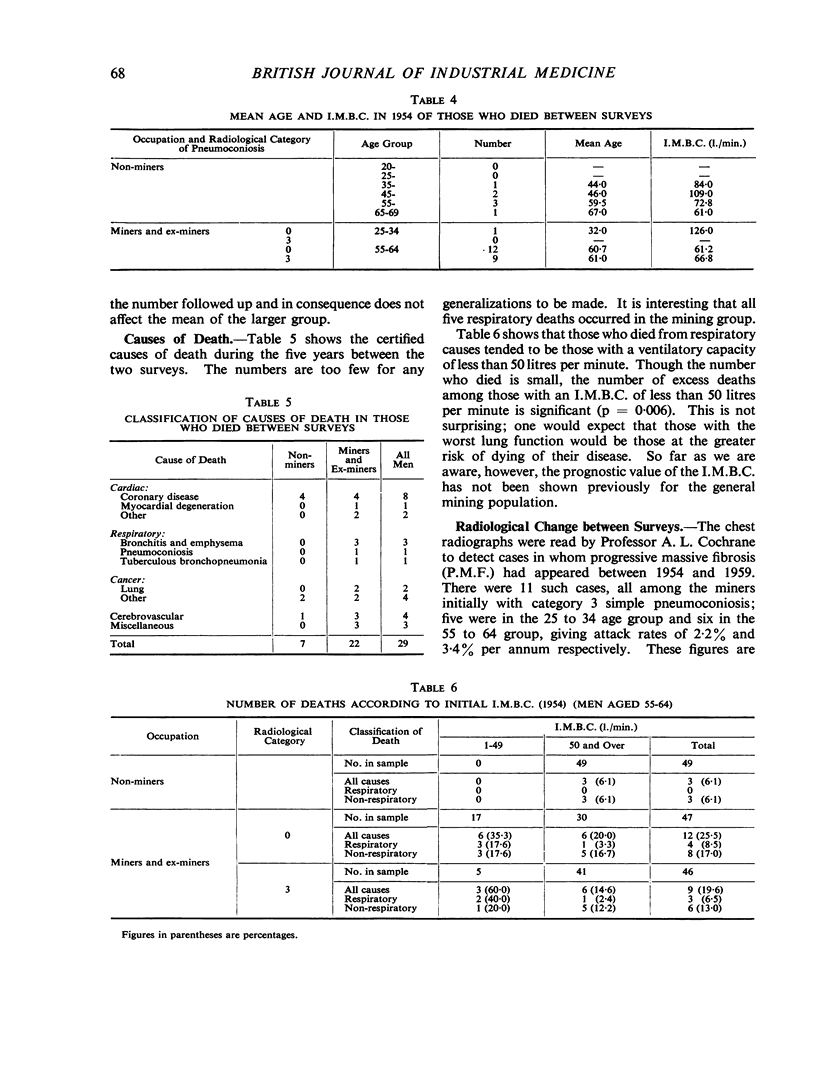
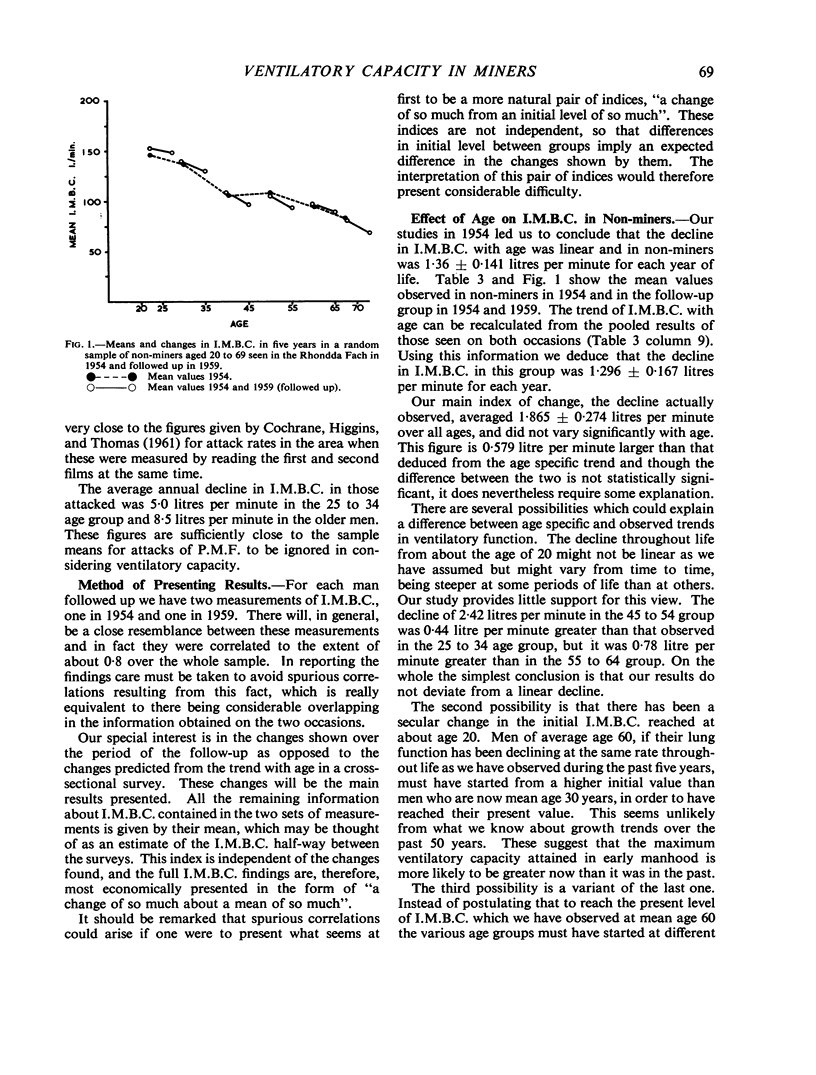
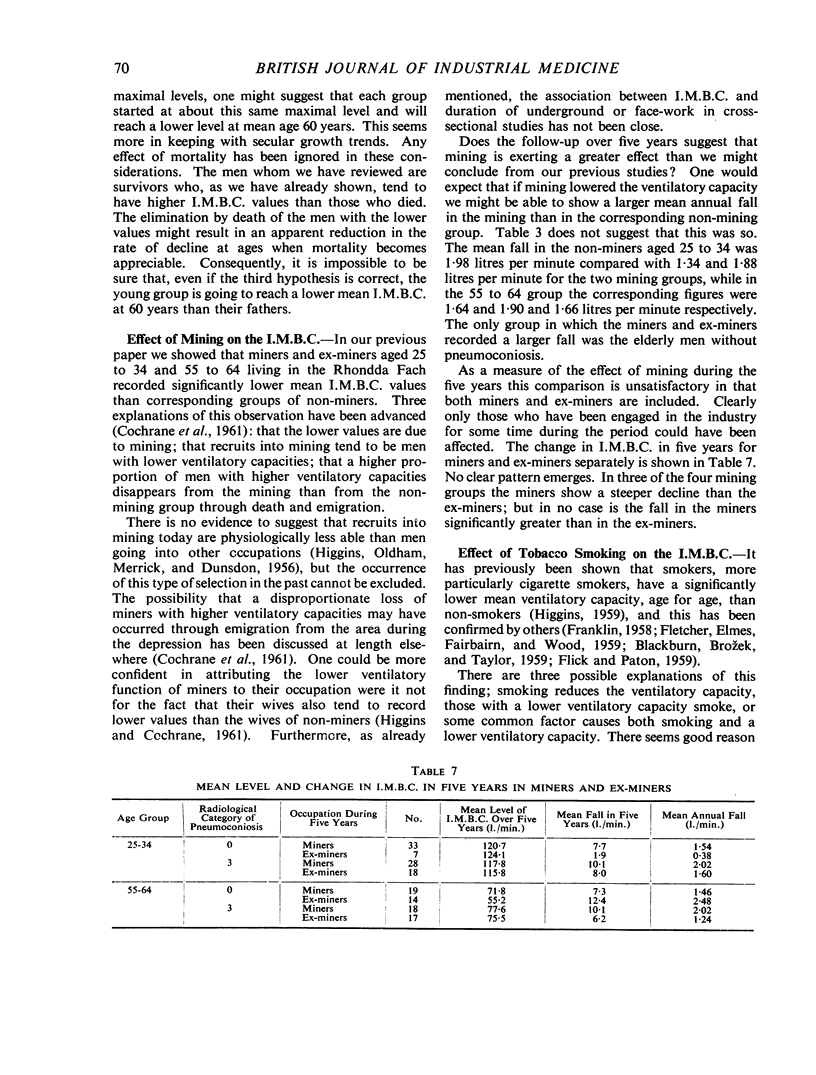

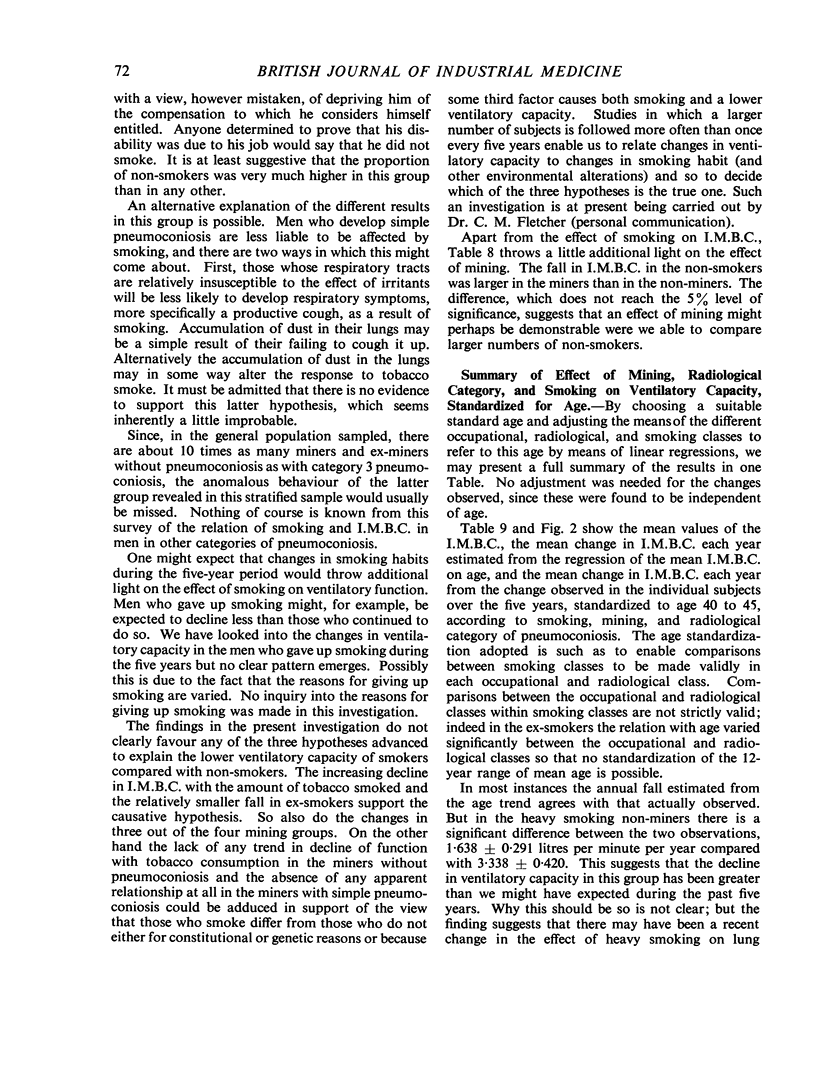
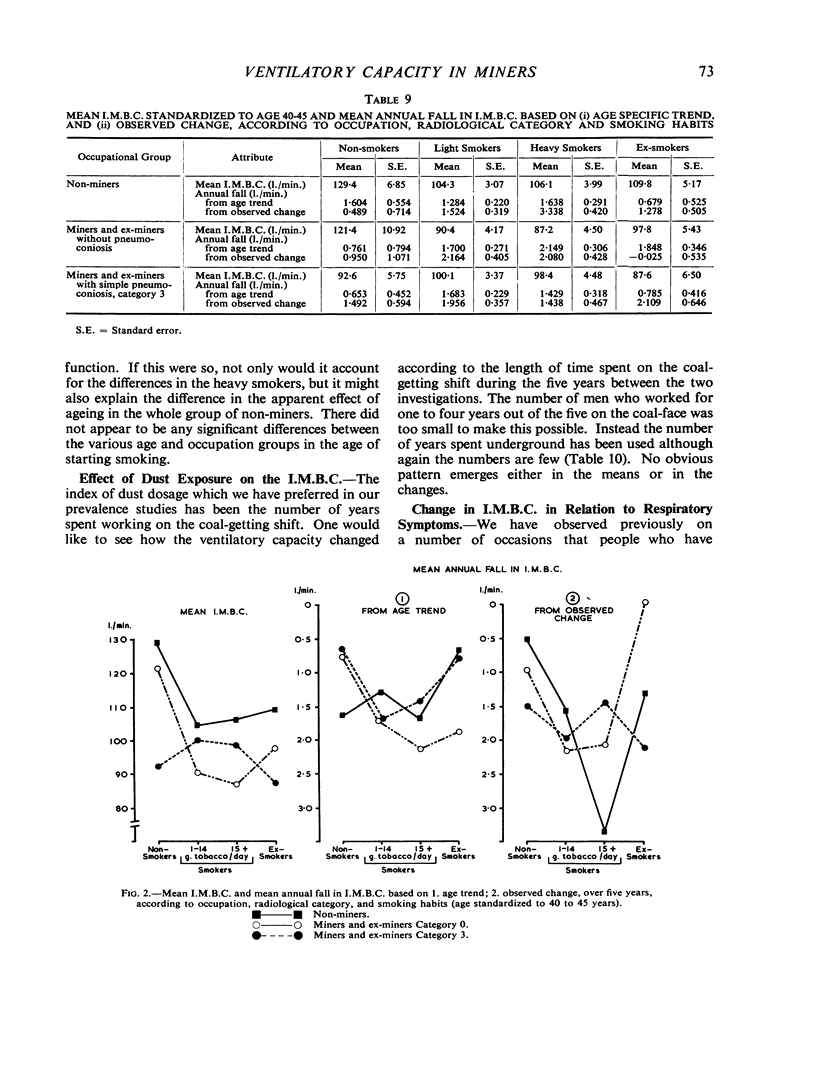
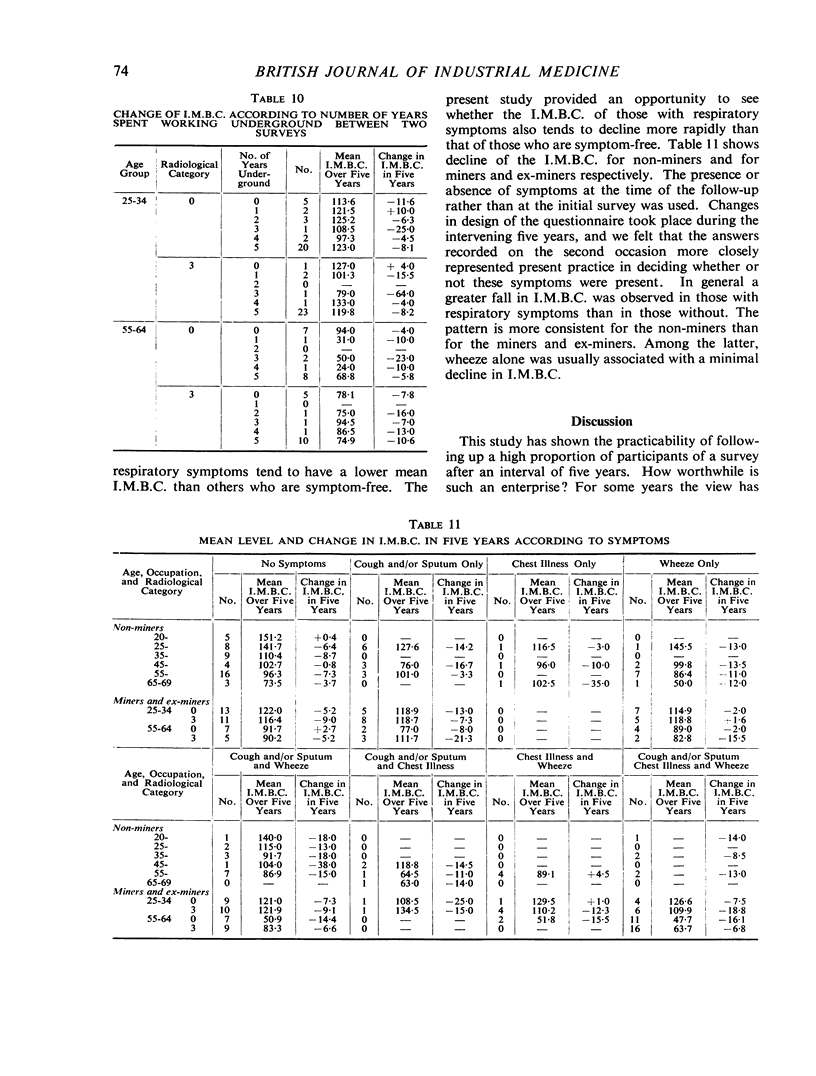
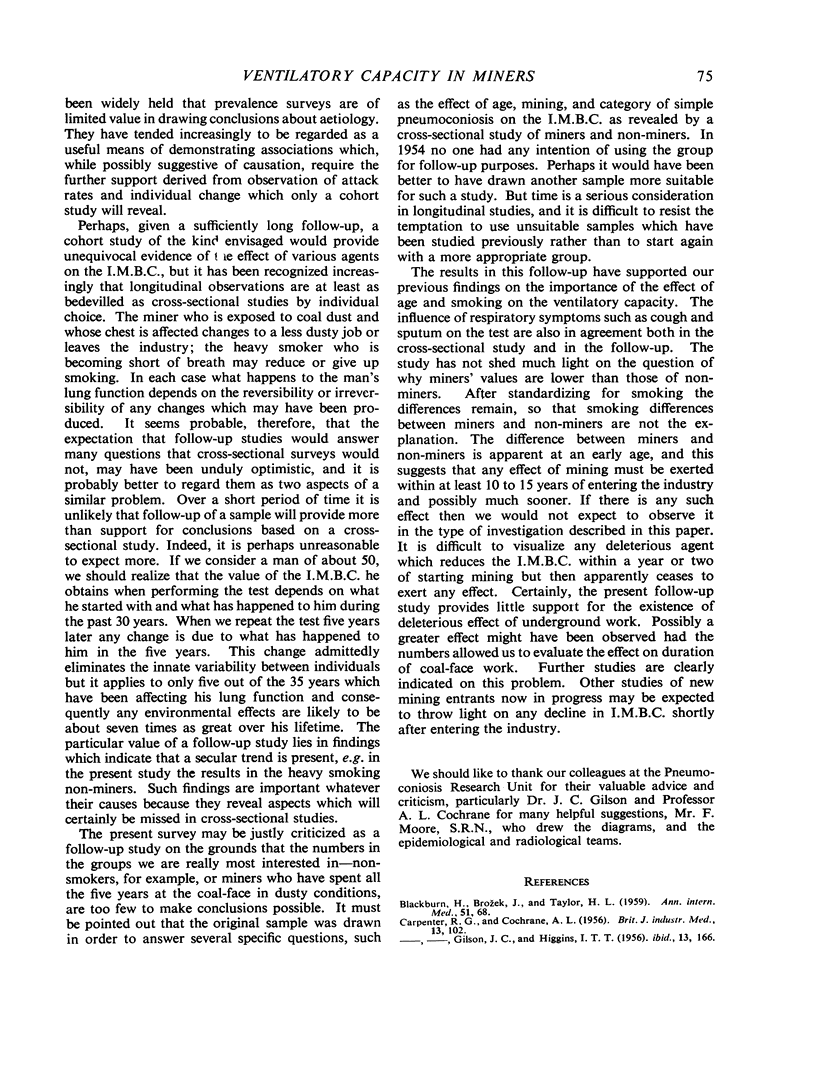
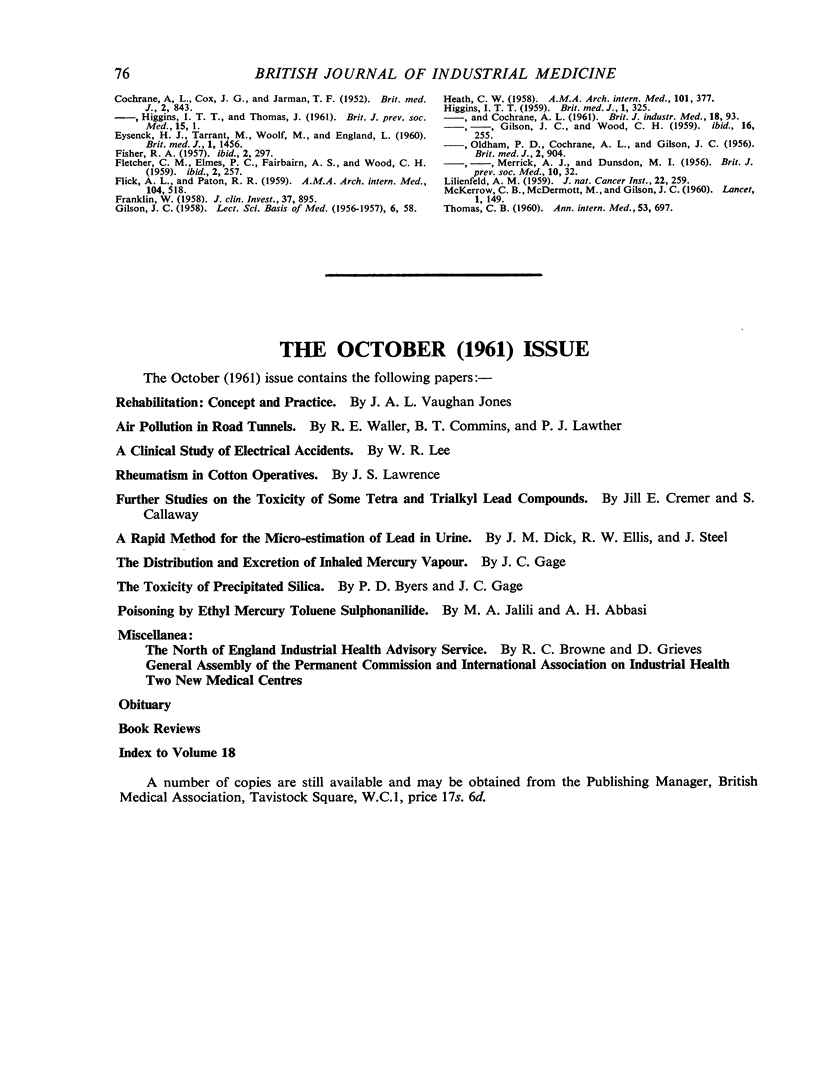
Selected References
These references are in PubMed. This may not be the complete list of references from this article.
- BLACKBURN H., BROZEK J., TAYLOR H. L. Lung volume in smokers and nonsmokers. Ann Intern Med. 1959 Jul;51(1):68–77. doi: 10.7326/0003-4819-51-1-68. [DOI] [PubMed] [Google Scholar]
- CARPENTER R. G., COCHRANE A. L., CLARKE W. G., JONATHAN G., MOORE F. Death rates of miners and ex-miners with and without coalworkers' pneumoconiosis in South Wales. Br J Ind Med. 1956 Apr;13(2):102–109. doi: 10.1136/oem.13.2.102. [DOI] [PMC free article] [PubMed] [Google Scholar]
- CARPENTER R. G., COCHRANE A. L., GILSON J. C., HIGGINS I. T. The relationship between ventilatory capacity and simple pneumoconiosis in coalworkers; the effect of population selection. Br J Ind Med. 1956 Jul;13(3):166–176. doi: 10.1136/oem.13.3.166. [DOI] [PMC free article] [PubMed] [Google Scholar]
- COCHRANE A. L., COX J. G., JARMAN T. F. Pulmonary tuberculosis in the Rhondda Fach; an interim report of a survey of a mining community. Br Med J. 1952 Oct 18;2(4789):843–853. doi: 10.1136/bmj.2.4789.843. [DOI] [PMC free article] [PubMed] [Google Scholar]
- COCHRANE A. L., GILSON J. C., HIGGINS I. T., OLDHAM P. D. Respiratory symptoms and pulmonary disability in an industrial town; survey of a random sample of the population. Br Med J. 1956 Oct 20;2(4998):904–910. doi: 10.1136/bmj.2.4998.904. [DOI] [PMC free article] [PubMed] [Google Scholar]
- COCHRANE A. L., HIGGINS I. T. Pulmonary ventilatory functions of coalminers in various areas in relation to the x-ray category of pneumoconiosis. Br J Prev Soc Med. 1961 Jan;15:1–11. doi: 10.1136/jech.15.1.1. [DOI] [PMC free article] [PubMed] [Google Scholar]
- EYSENCK H. J., TARRANT M., WOOLF M., ENGLAND L. Smoking and personality. Br Med J. 1960 May 14;1(5184):1456–1460. doi: 10.1136/bmj.1.5184.1456. [DOI] [PMC free article] [PubMed] [Google Scholar]
- FLETCHER C. M., ELMES P. C., FAIRBAIRN A. S., WOOD C. H. The significance of respiratory symptoms and the diagnosis of chronic bronchitis in a working population. Br Med J. 1959 Aug 29;2(5147):257–266. doi: 10.1136/bmj.2.5147.257. [DOI] [PMC free article] [PubMed] [Google Scholar]
- FLICK A. L., PATON R. R. Obstructive emphysema in cigarette smokers. Arch Intern Med. 1959 Oct;104:518–526. doi: 10.1001/archinte.1959.00270100004002. [DOI] [PubMed] [Google Scholar]
- HEATH C. W. Differences between smokers and nonsmokers. AMA Arch Intern Med. 1958 Feb;101(2):377–388. doi: 10.1001/archinte.1958.00260140209031. [DOI] [PubMed] [Google Scholar]
- HIGGINS I. T., COCHRANE A. L., GILSON J. C., WOOD C. H. Population studies of chronic respiratory disease. A comparison of miners, foundryworkers, and others in Staveley. Derbyshire. Br J Ind Med. 1959 Oct;16:255–268. doi: 10.1136/oem.16.4.255. [DOI] [PMC free article] [PubMed] [Google Scholar]
- HIGGINS I. T. Tobacco smoking, respiratory symptoms, and ventilatory capacity; studies in random samples of the population. Br Med J. 1959 Feb 7;1(5118):325–329. doi: 10.1136/bmj.1.5118.325. [DOI] [PMC free article] [PubMed] [Google Scholar]
- LILIENFELD A. M. Emotional and other selected characteristics of cigarette smokers and non-smokers as related to epidemiological studies of lung cancer and other diseases. J Natl Cancer Inst. 1959 Feb;22(2):259–282. [PubMed] [Google Scholar]
- THOMAS C. B. Characteristics of smokers compared with nonsmokers in a population of healthy young adults, including observations on family history, blood pressure, heart rate, body weight, cholesterol and certain psychologic traits. Ann Intern Med. 1960 Oct;53:697–718. doi: 10.7326/0003-4819-53-4-697. [DOI] [PubMed] [Google Scholar]


